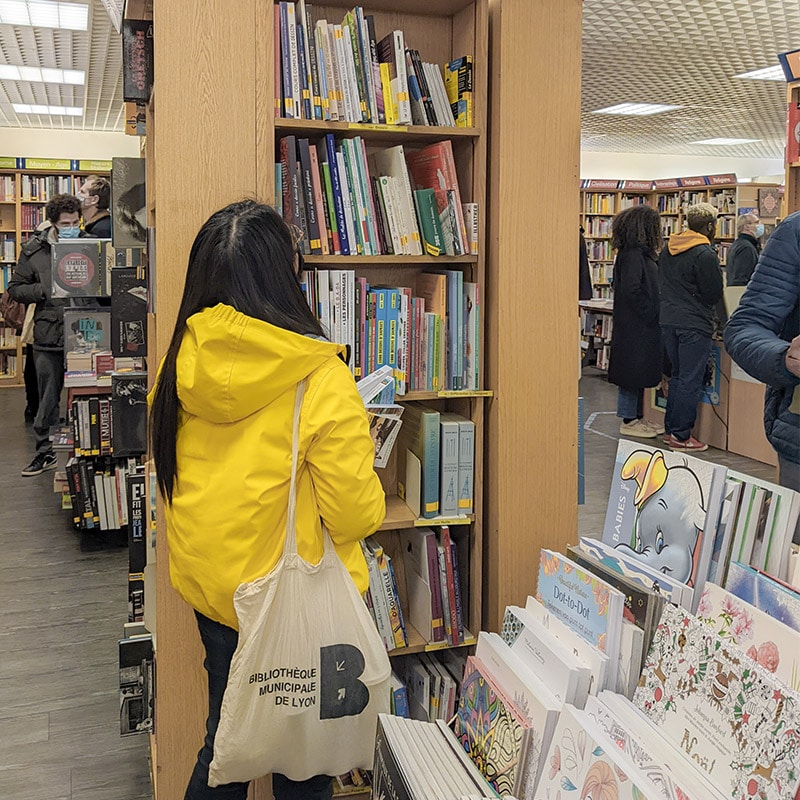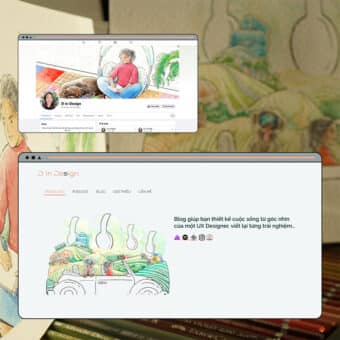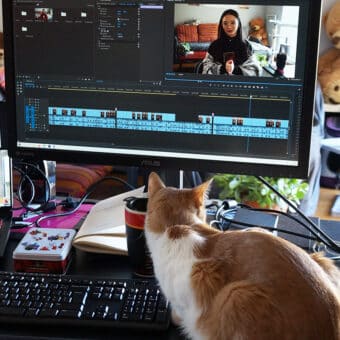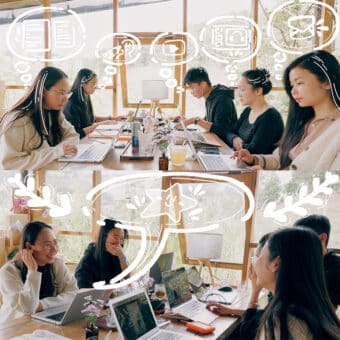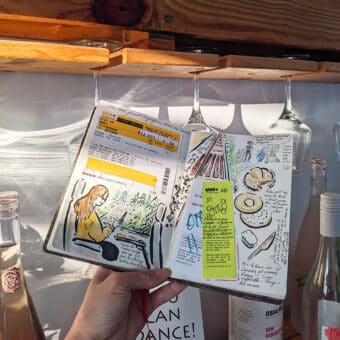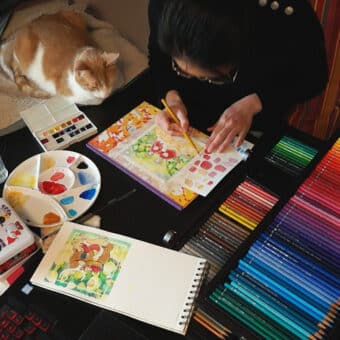In 2022, as I write this article, it is totally possible to learn to draw by yourself.
According to Oxford, self-taught means: “having learned something by reading books, etc., rather than by somebody teaching you.” Learning to draw in self-taught therefore means learning independently, outside of accompanied courses, such as professional training managed by an institution, or art courses in studio and individually taught by an artist.
So, how can we find resources and supports to learn how to draw as a self-taught artist?
The (seemingly obvious) answer that we have all heard is: by searching on the Internet. However, the Internet is vast, and googling “learn to draw on my own” does not guarantee that we will come across relevant resources that correspond to our needs.
The embarrassment of choice
While searching for drawing training, we easily come across advertisements for drawing courses, with more or less clear promises; or on the presentation web pages of art schools that we do not necessarily have time or money to attend.
Scrolling down, we discover testimonies of several artists who encourage us to learn to draw by ourselves by offering us multiple advices. However, the advice varies greatly from one person to another. Sometimes, this advice is even contradictory:
“Offsetting a drawing gives you a better understanding of the main references and shapes.” Versus “Offsetting is cheating! It will block you and kill your ability to observe and analyze.”
Or:
“To start, do not buy high-end watercolor palettes. Opt for supermarket palettes to make lots of tests without ruining yourself. You must first master your hand, your movements, your techniques before investing in good equipment.” Versus “Invest in quality materials right away, even in small quantities! An experienced artist will know how to overcome the limitations of a cheap palette, while a beginner will quickly get discouraged, because these materials will never produce a satisfying enough result.”
Even if we are lucky enough to find a website or a YouTube channel with structured and coherent contents, these do not always suit us: the techniques are not applicable to our style; the advice is either too simplistic or too academic; most of the tutorials teach us to copy…
Learning to draw by yourself should be a learning process adapted to YOU
By talking with many artists and being self-taught myself, I strongly believe that there is no one rule, order, or procedure to follow when it comes to learning to draw. You can start at any point. I certainly do not deny the importance of learning the basics, but you do not need to start with the basics like in math, where you have to learn multiplication before starting to do integral calculations.
In order to avoid wasting your time in research instead of dedicating this valuable resource to practice, I first share with you the tips for finding the free learning sources that fit you. Then, in a second step, we study how to choose in which paid resources you should invest. And we finish with the 3 golden rules to optimize your learning.
The solutions mentioned in the article are the ones I have used for several years and continue to use today. I am NOT going to give a reference (*), because the goal is to allow you to find the resources that fit your own situation.
To find the perfect support for YOU, you should start by answering these questions:
- What would you want to draw?
(Example: I would like to draw life scenes with several characters in an environment).
- What kind of technique do you want to master (or test)?
(Example: I would like to draw with watercolor.)
- What is your level? What do you want to learn more about?
(Example: I have already been familiar with the basics of watercolor for a few years; I want to learn to :
- control the light in my drawings
- vary the poses of the characters
- better portray the interactions between different characters
- create more elaborate backgrounds
…)
- What is the style you want to develop (or test)?
(Example: I want to have a cute, cartoon-like style).
Once you have defined your needs, then the search for supports and resources can begin, and let’s start with the most fun:
Let the algorithms work to our advantage!
The infinite source of tips and hacks
As you answer the questions listed above, are there any names of artists that pop into your head?
After listing the illustrators who master one or more aspects you defined (you need at least 5), start following them on the visual social network where many artists show their work every day: Instagram.
On Instagram, most artists share spontaneously in posts or stories tips, advices, hacks, work steps, backstage, materials used…
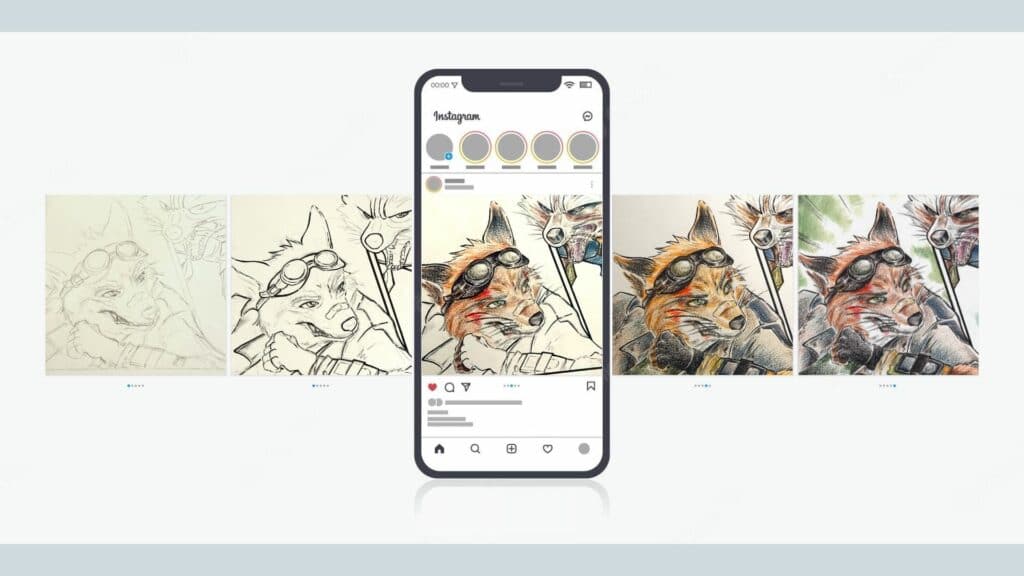
The artists you have in mind when answering the above questions have already accomplished exactly what you want to accomplish. Being inspired by their journey, applying their tricks, testing their approach can point you in the right direction.
However, you may not find these kinds of pearls in your favorite artist(s) on Instagram: their Instagram feed is just a beautiful showcase for their finished creations. And here’s where the algorithm’s magic happens:
If you keep liking, interacting under the contents of these artists, saving the posts, clicking on the hashtags in the descriptions to find the other creators who carry out the same style, you send the signal that you appreciate this kind of content to Instagram.
The algorithm, which has only one ultimate goal to keep you on the platform as long as possible, will offer you more similar content. It will make you discover several other artists who have approximately the same style. Among the proposed accounts, you will surely come across those who share their creative process, or even accounts devoted to tutorials and tips. From now on, the inexhaustible source of tips is open to you.
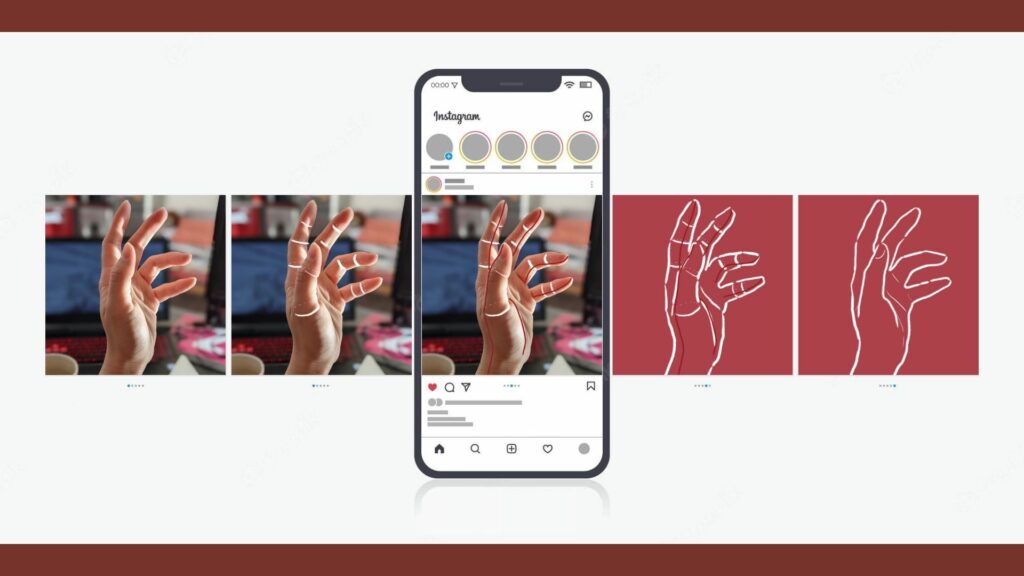
The limits of instant content
A carousel post on Instagram features no more than 10 photos and videos inside an insert, stories are limited to 15 seconds, reels to 90 seconds. Because of these constraints, Instagram shares never go into detail.
Even though Instagram is full of inspiration, and every time I open the app, I learn new little tricks, going deeper into learning will remain difficult. To that end, here’s my solution: From the accounts of artists we appreciate, let’s spot those who do speed drawing (video that films the entire creative process in fast forward). A quick click on the link in their bio (page link) can tell you if the artist has a YouTube channel or not. If so, there is a good chance you will find speed drawings on their channel.
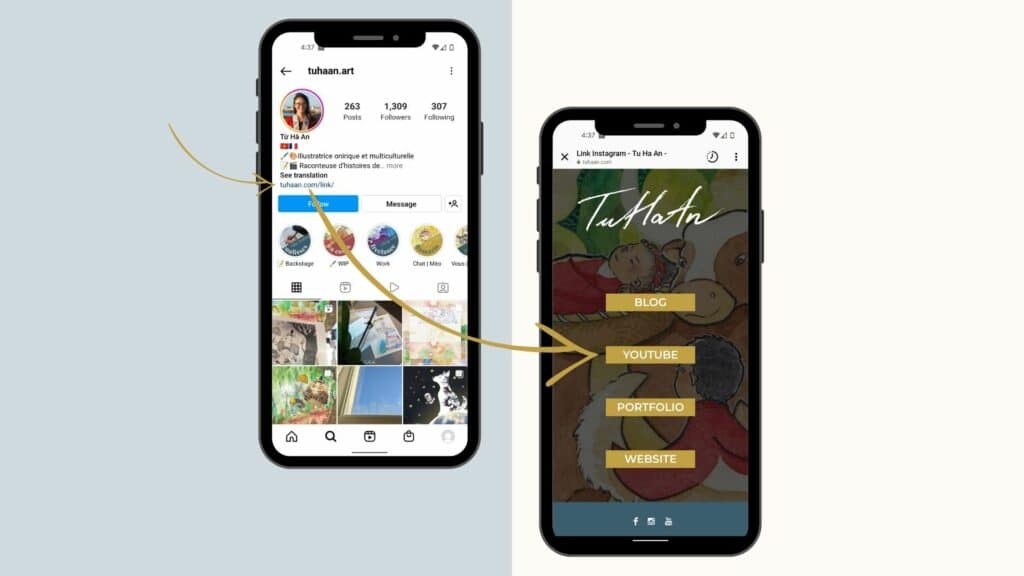
Explore the creative process of your favorite artists while staying at home
Speed drawing videos: a gold mine for self-taught illustrators
If you land on a speed drawing video thanks to the tip mentioned in the previous paragraph, you now have access to the long and detailed version of the “teaser” discovered on Instagram.
On these speed drawings, you will find the process of transforming the blank page into a visual work, step by step, with the tools they used. Several artists also comment in voiceover their process explaining their ideas and arguing their choices.
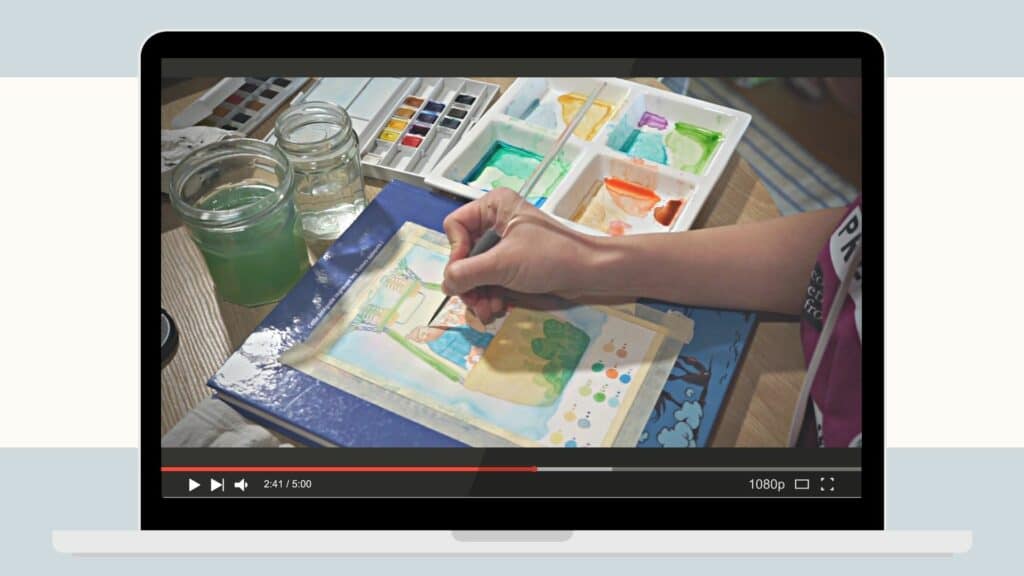
Watching the speed drawings of different artists will allow you to understand the way they create, where they start, how they produce certain effects…, and then define the way you want to proceed.
I usually go back to the speed drawings I already watched a few years ago. Each time, I discover new techniques, new details that I couldn’t spot during the previous viewings, because I didn’t have the level and the experience to understand some of the artist’s actions.
The limit of speed drawing
Speed drawing only reflects the current level of the artist. Therefore, if the gap between your level and the artist’s is too important, you may miss interesting practices.
If you browse long enough in the universe of speed drawing, you will discover that some artists have, in addition to their YouTube channels, a COURSE! We have found these artists because they are exactly where we want to go. So, will attending their courses allow us to get there faster?
Are filmed and artist-taught classes a good way to learn?
As our topic is still self-taught, in this chapter we only discuss pre-recorded courses that are available for purchase or subscription on a platform (Patreon, Domestika, Skillshare, Artesane…)
At the beginning of this article, we briefly talked about the ads and commercials for drawing courses. Most of them make the promise of going from 0 to 1 (learning to draw from scratch), but to go from 1 to 2, from 1 to 10, there is much less content. Pre-recorded courses from professional artists may not come up in the first results of Google searches, but they are no less qualitative.
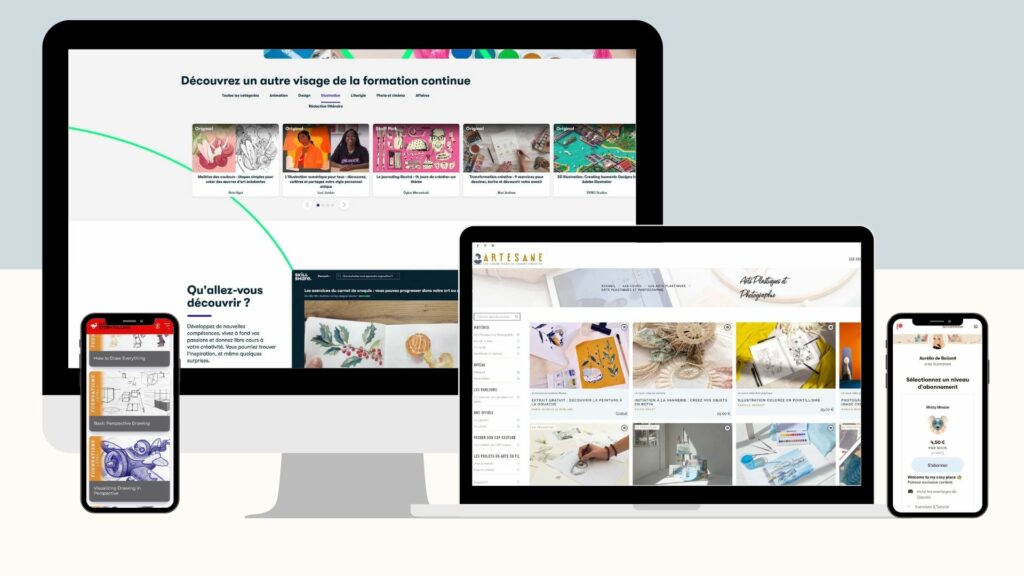
How to choose the right course for your level?
The courses proposed by the artists on these platforms are often aimed at more specific targets. These courses aim at deepening a certain theme or technique. Pre-requisites are usually present.
Recently, I opted for a 7 hour course of pre-recorded videos on mixed media watercolor and digital. The course gets right to the essence of its subject without teaching basic watercolor or Photoshop skills, as these are prerequisites. To follow the course, it is also essential to have on hand the watercolor material, the graphic tablet and the Adobe Suite.
These short courses allow (and encourage) independent practice and the adaptation of the technique taught to your own style. These courses are intended to be a boost to quickly acquire a specific skill.
However, if these classes are so specific, how can we choose the right one?
The lessons in these courses are structured with step-by-step methods, commented by the instructor-artist. A person who is brilliant in one area may not be a good teacher in that same area. Even if they are a good teacher, there is no guarantee that their approach will work for you. (I have a friend who admired an artist. Nevertheless, she was grumbling all through her class, because she could not apply his technique of drawing a cat by first doodling potatoes…)
If you land on the presentation of a course through speed drawing or the artist’s Instagram, you should already have an idea if the course has any chance to satisfy you or not. If you find out about the course randomly, scour, dissect the free content before paying for the course. Most artists do not have an organization behind them to ensure sales. Therefore, they make free content available for us to judge if the program is worth it. Take advantage of all the free resources, YouTube, Instagram, newsletter… Test, try to apply these tips, since until you have experienced for yourself, you can not know if you like it or not!
Also, read the prerequisites before you purchase and commit. There is often a “satisfy or refund” guarantee period, or an option to unsubscribe in case the content taught does not fulfill your expectations.
The limit of pre-recorded courses from the modern artists
Here is the hazard when you follow in the footsteps of one person, or people who have the same kind of style: you risk becoming the mini version of that artist!
The logical solution would be to vary the artists. However, looking for tips on social networks already consumes a lot of time! And I certainly would not want to push you to spend money to follow the courses of a dozen artists.
Another solution would be to vary the sources of learning.
Books – a sure value
While speed drawing videos and online courses are great for the process and tutorial aspect; a condensed and structured book is excellent for getting into the basics, the theory, and the straightforward techniques.
There are many drawing books available in bookstores that cover a wide range of topics. Many of these books were published before the internet and social networking era, so the techniques they mention will save you from the hype and take you out of your comfort zone. Personally, I have a special affection for this learning method (I shared my story in this article). I usually hang out in bookstores, and every time I flip through a book, I learn something new!
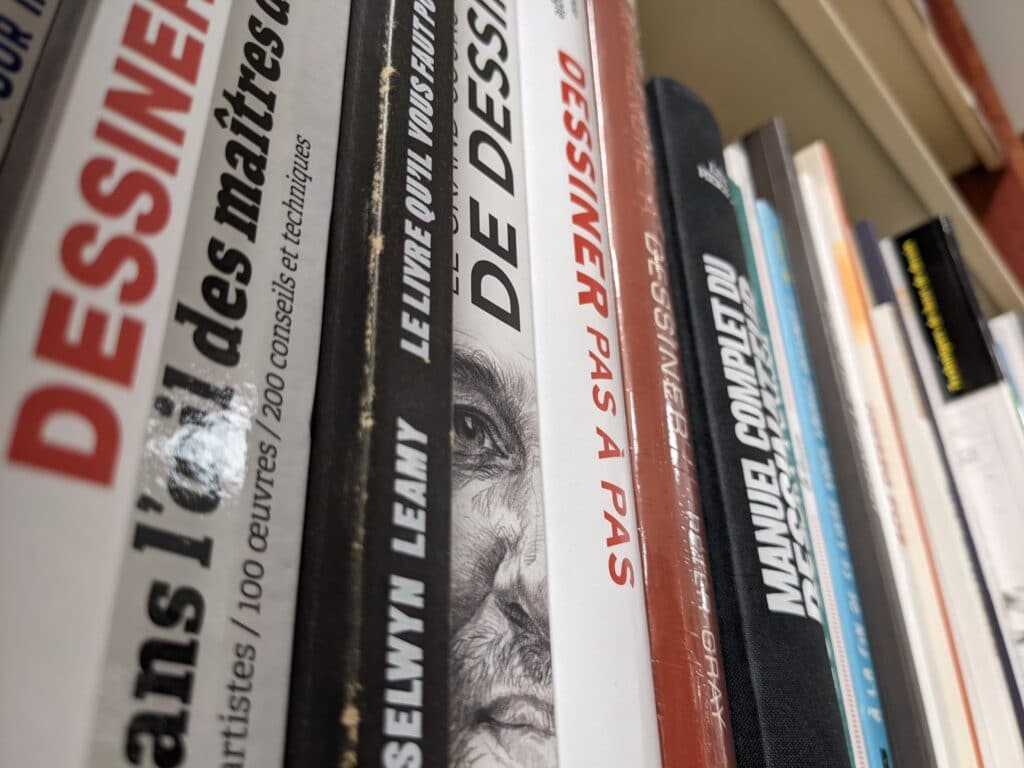
To avoid spending on a book that does not suit you, my tip is to test (again!). When you are interested in a book, memorize a tip in that book. Test it at home, and repeat the process twice more. After the third time, if you cannot wait to go back and look at the book, buy it!
Of course, you can also borrow the books from the library to have more time to go through the content.
The resources and supports mentioned above have one thing in common: they allow us to learn through someone else’s work and processes. This artwork is already an interpretation of reality, an interpretation of someone else. In order to build your own interpretations, it is essential to complement your learning with non-painting sources.
Learn to draw with non-painting sources
Artists often advise us to make observational sketches: observe nature, landscape, people, the world around us, analyze them and transcribe them on paper. This can be quite challenging if you are not used to it in the first place, but it will make your work more authentic and original.
I would like to address another kind of source, which is also the interpretation of reality, but by other professions.
For example:
- The cinematographic scenes show us a lot of theories on the use of light, on the meaning of colors in relation to the atmosphere of the scene, on the way to place the character in the frame to accentuate his state of mind…
- The photos teach us about perspective, image composition, and how to use focus to tell a story….
- The engineering drawings are perfect resources to learn the representation of complex objects in 3D, the cuts….
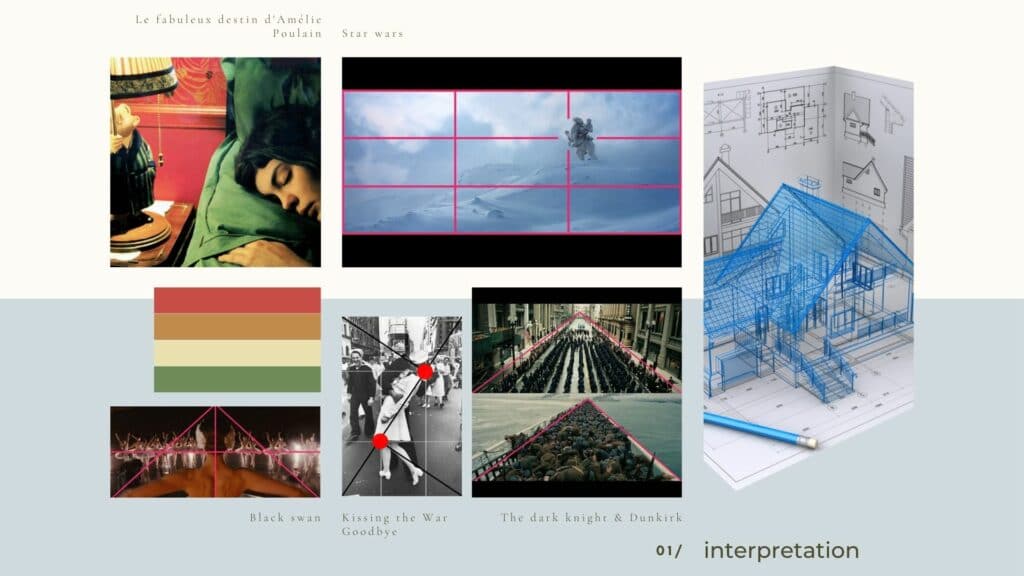
All resources are complementary. You are free to alternate them, to mix them, to start with one then continue with the other. There was no Instagram when I started my self-taught drawing journey, so I started with books. I then immersed myself in non-painting sources for a long time, and finally landed on Instagram and YouTube.
3 golden rules for self-taught illustrators
Do test and have fun!
Only you can recognize what works for you. To find the perfect technique or support, you have to test it yourself.
The kind of teaching you should prioritize is the kind that will help you develop your predisposition, what you are good at. (I have talked in detail about predisposition in this article). And most importantly, it is the one that gives you pleasure and pride of accomplishment.
Get to the end of one course before moving on to the next
Focus on one particular lesson before moving on, as it is best to fully solve one problem before tackling another. Go all the way to the end to get the most out of what you can.
“Going all the way” does not only mean consuming all the videos, and all the theory worksheets, but especially doing all the practice exercises to get the knowledge applied and fixed.
Don’t compare yourself!
Constantly looking at people who are more talented than you on social networks can sow doubts and give our self-confidence a blow. Most often, artists only show their success, because their potential client will be more reassured by seeing a clean and smooth process. And most of us don’t have the patience to follow an 8 hour unaccelerated drawing video with 5000 times the eraser is used or 5000 hits of Ctrl+Z. ( I barely exaggerate :p )
We do not have the same environment, living conditions or constraints. Go at your own pace!
If you have other tips for learning to draw or feedback from your tests, please help me to complete them in the comments.
Be brave and perseverant during your self-taught learning journey.
Keep creating!
Tu Ha An
(*) The drawn examples presented in the article are made by myself. Their only purpose is to illustrate the statements. I am not a drawing teacher and I do not intend to become one.
*Please consult the information on Copyright & Intellectual Property before copying or mentioning the content and images of tuhaan.com



